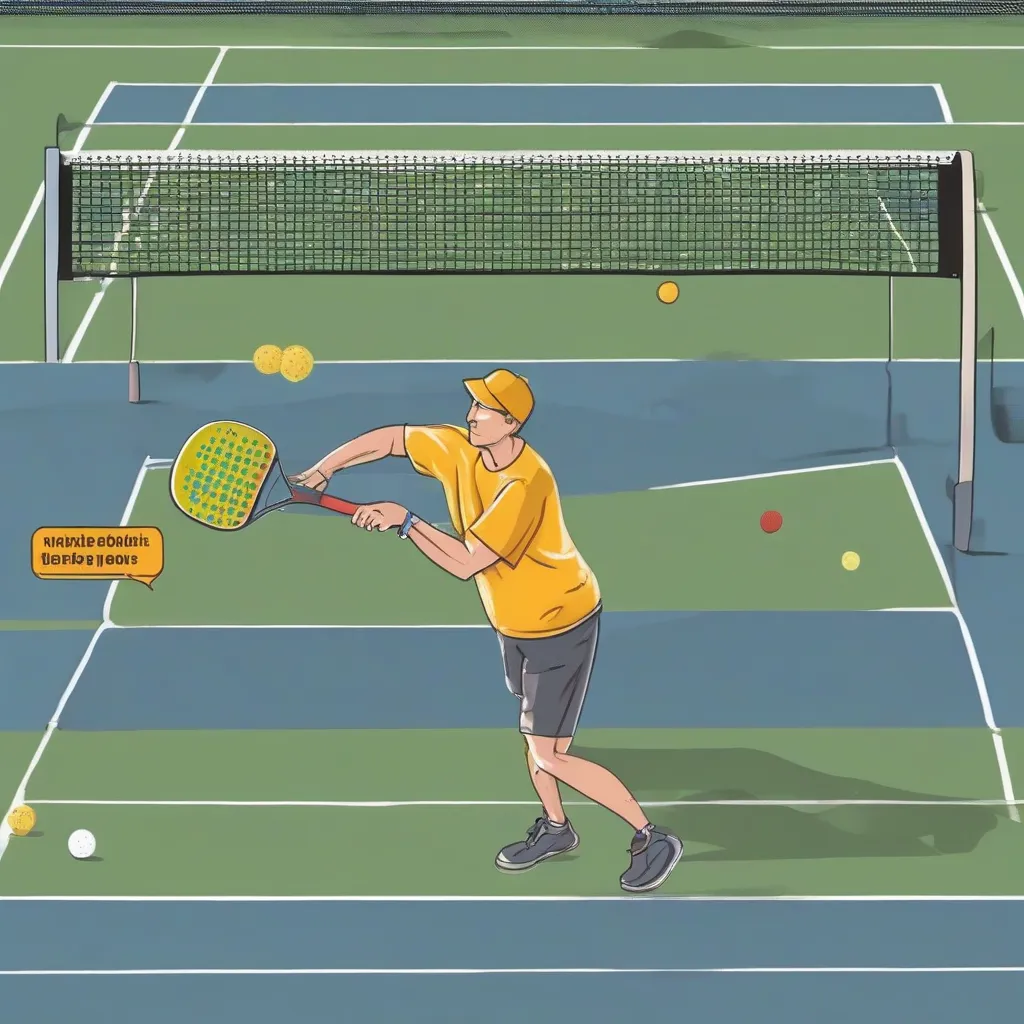Imagine this: you’re at the net in a crucial pickleball point. Your opponent is ready for your dink, eyes locked on your paddle. Suddenly, you shift your weight ever so slightly to the left, as if preparing for a cross-court dink, but at the last moment, you drop the ball softly into the open court on the right. Point, set, match! That’s the magic of misdirection.
Misdirection is a crucial tactic in pickleball that can elevate your game from good to great. It’s about deceiving your opponent, creating openings, and capitalizing on their anticipation. In this comprehensive guide, we’ll delve into the art of using misdirection effectively in pickleball matches, providing you with the strategies and techniques to outsmart your opponents and dominate the court.
Understanding the Psychology of Misdirection
Misdirection in pickleball preys on your opponent’s expectations. By subtly suggesting one shot and then executing another, you disrupt their timing and positioning, creating opportunities for winners. It’s like a magician’s sleight of hand, drawing their attention to one area while the real action happens elsewhere.
Reading Your Opponent
Effective misdirection starts with observation. Pay attention to your opponent’s tendencies. Do they favor a certain side? Are they quick to react to fast-paced shots? Understanding their strengths and weaknesses will allow you to tailor your misdirection tactics for maximum impact. As legendary coach Vic Braden once said, “The key to winning is not simply hitting the ball hard, but hitting it where they ain’t.”
Body Language: The Silent Communicator
Your body language is your most potent tool for misdirection. Even the slightest shift in weight, a flick of the wrist, or a change in eye contact can create doubt in your opponent’s mind. Practice controlling your body language to convey false intentions and mask your true shot selection.
Practical Misdirection Techniques in Pickleball
The Fake Dinking Motion
One of the most common and effective misdirection techniques is the fake dinking motion. As you approach the net, feign a dink by bringing your paddle back as if you’re going to push the ball softly. At the last moment, drive the ball deep into the opponent’s backhand corner. This sudden change of pace and direction can catch them completely off guard.
 Pickleball Fake Dink
Pickleball Fake Dink
The Head Fake
Similar to the fake dinking motion, the head fake involves subtly looking in one direction and then hitting the ball in another. This can be especially effective when combined with a change of pace or spin. For instance, look towards the sideline as if preparing for a cross-court shot, then quickly drop the ball short in the middle.
The Drop Shot Disguise
Disguising your drop shots is a fantastic way to capitalize on an aggressive opponent. As they charge the net, anticipating a hard-driven shot, subtly change your paddle angle at the last second to execute a delicate drop shot. The element of surprise often results in an easy point.
Utilizing the Third Shot Drop
The third shot drop is a classic pickleball strategy that utilizes misdirection. After the serve and return, the serving team often has an opportunity to hit a drop shot. By approaching the net aggressively while subtly changing your paddle angle at contact, you can deceive your opponents and win the point with a well-placed drop.
Drills to Enhance Your Misdirection Skills
Dinking and Driving Drill
Practice transitioning smoothly between dinks and drives. This will develop your ability to disguise your shots and keep your opponents guessing.
Shadow Swings with Body Language
Incorporate body language into your shadow swings. Focus on subtle movements and weight shifts that can create deceptive cues.
Live Play Scenarios
The best way to hone your misdirection skills is through live play. Experiment with different techniques and observe how your opponents react. Analyze what works best and refine your strategies accordingly.
Mastering Misdirection: Patience and Practice
Remember, misdirection is not about trickery; it’s about strategy and execution. It takes time and practice to master these techniques and integrate them into your game. Don’t be discouraged if you don’t see results immediately. With patience and persistence, you’ll soon be wielding the power of misdirection to outsmart your opponents and achieve pickleball mastery.
Conclusion
Misdirection is a powerful tool that can significantly enhance your pickleball game. By understanding the psychology of misdirection, mastering the techniques, and practicing diligently, you can gain a significant advantage on the court. Remember to observe your opponents, utilize your body language effectively, and disguise your shots to keep them guessing. With dedication and practice, you can transform misdirection into a winning strategy and dominate the pickleball court. Now, get out there and start practicing! Share your experiences with misdirection in the comments below. What techniques have you found most effective? We’d love to hear from you!
- Bond, Payton (Author)
- English (Publication Language)
- Baker, Joe (Author)
- English (Publication Language)
- Anderson, Brian (Author)
- English (Publication Language)
- Carnot, Prem (Author)
- English (Publication Language)
- Palcic, Lisa (Author)
- English (Publication Language)
- Callahan, John (Author)
- English (Publication Language)
- Hall, Dennis (Author)
- English (Publication Language)
- Baker, Mr. Joe (Author)
- English (Publication Language)
- Foster, Blake (Author)
- English (Publication Language)
- Satka, David (Author)
- English (Publication Language)









